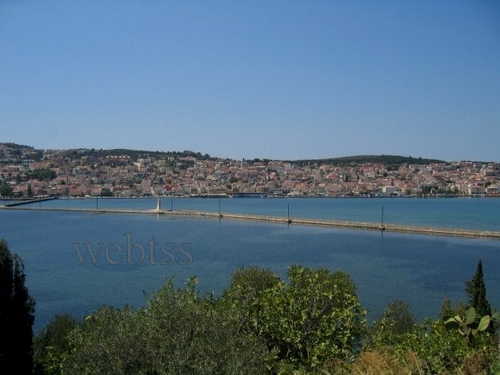 Kefalonia Guide
Kefalonia Guide  Argostoli
Argostoli  Debosset Bridge
Debosset Bridge
Welcome to
the Kefalonia Travel Guide.
It is a fully updated guide to all matters relating to this beautiful island Kefalonia in
the Ionian
Sea. Find information about the history of the island and about all the
areas of interest for the tourist
Debosset Bridge
Just as you enter the town you will find the ‘Devosetou’ bridge named in honour of the Swiss engineer Philip Charles-De Bosset. The English army officer and governor of Kefalonia inspired the construction in 1813 and it was the British who built it.The purpose was to prevent entry into Argostoli from the Koutavos, because in the old days the area was synonymous with malaria and death. It is the largest stone bridge over the sea with a length of 900 meters. Initially, it was built from wood. But due to the passage of people and animals after the levelling of the hill, ‘Metela’, the bridge was rebuilt in stone.It was first built with arches every 4 meters and was completed after three years. At the end of the project ‘De Bosset’ proposed building a monument in honour of the nation, and so a marble obelisk was constructed in the middle of the bridge, symbolizing the gratitude of the House of Kefalonian in Great Britain.Across the other side of the bridge from Argostoli lie the English and Italian cemeteries and the Greek Cemetery of the Monastery of ‘Drapanos’. It was renovated by Napier between 1822-1830. But during the Italian and German domination it suffered a lot of damage from the bombings but still remained intact. The earthquake of 1953 also caused damage sinking a large part of it and leaving several cracks, but nevertheless it continues to stand resplendent today.In 1970 it was declared a monument preserved and protected by international authorities. Today, due to further damages and sinking cars are no longer allowed to pass over it, but the pavement is still suitable for walking on and especially at night it offers an idyllic atmosphere.


















